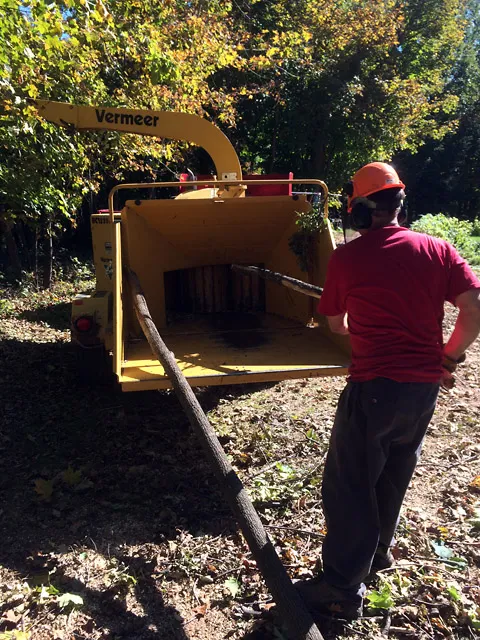It was a couple of days before Thanksgiving and I still had not planted the garlic. In New York City and region, this would be of little concern, but here, well I was pushing it well beyond ordinary pushing it.
The week before it had rained, really rained, so much so that our excavation had completely filled with water (a story for another day, if ever). Then, not two days later, it froze for thirty six hours ensuring that the wet earth had become a solid block. Digging was out of the question. The swimming pool, above, became an ice rink.
A week later, the Monday before Thanksgiving, temperatures were climbing, yet again above forty. And the gravel came. It kept coming until there were two hundred tons of gravel, nearly one hundred a fifty cubic yards piled inside and outside the pit.
Meanwhile, there was garlic to be planted, the Xian Turbans were sprouting, and the cloves would need at least a few weeks without frosted earth to settle in, but what could be anticipated after such a quick, deep freeze just a week prior? I wheeled out the seldom used, 30 year-old Troybilt tiller, filled the always flat right tire with compressed air, set the throttle, lifted the choke, removed the spark plug, poured a cap-full of gasoline into the chamber, replaced and hand-tightened the spark plug, yanked on the chord, bah the the the the, repeat, and then again. Throttle off, fully tightened the spark plug, dropped the choke, throttle on, yanked the chord, then bah buh, buh, buh, buh, buh, pop, and the old Kohler engine was humming.
It wasn't easy to break the semi-frozen, wet earth, nor the lawn which floats above it. The tiller is a beast, requiring strength to maneuver, patience on turns, and knee-jerk restraint as it rockets forward when hitting solid soil. I made several passes, bottoming out at six or seven inches on the lawn's compacted clay bed. I curved these new beds to match the Hydrangea transplanted from the south side of the house to edge the boundary of the lawn and driveway, leaving just enough room for the mower to pass between.
Although our garlic grew pretty well this year, experience told me I wanted compost tilled in, but I wouldn't have anything to do with buying the bagged stuff. The city of Minneapolis collects organic yard waste, which it sells to a composting company that happens to have a site in our area. I think I paid ten dollars for what would easily be well over one hundred dollars of bagged compost. These places are worth their weight in black gold.
I tilled in about two inches of compost and made the most of tight quarters by removing any chance for walking rows (I'll regret this later). In two beds, about five feet by twelve each, I planted roughly 350 cloves, or about 3 per square foot.
I had more cloves, of course, and tilled a row from last season's planting bed for those.
Although it was the day before Thanksgiving with much to do, I chose to make another trip to the compost facility so I could place something over the indents made when the cloves are pushed in. The soil isn't very soft or deep; I felt this could help to keep the cloves from freezing too soon.
A light snow had fallen, which can act as an insulating layer, but more was needed.
Out back I had been saving an old hay bale that Rex had stored under the playhouse we gave away last summer. It was just the thing I needed to insulate now that temperatures were plummeting (a week later I placed even more insulation -oak leaves from the woods, and just before the next snowfall).
This is the spot the straw had been laying. Even though the ground all around was frozen three inches deep, this spot was still unfrozen.
In fact, there was a lot of unexpected activity in the heat generated by decaying straw.
Pill bugs, Armadillidiida, also known as wood lice.
And this pale sprout.
Since the week of Thanksgiving we've had more days over thirty two, some well over, than those under it. Most nights have been relatively mild, staying well above twenty eight degrees. In a year where I've often been behind on what needs to be done and with weather the spearhead of possible defeat, I think I may have gotten lucky getting the garlic in this late.
But I'm not having any luck keeping the turkeys off the mulch.
It seems they're quite the lovers of gardens.
























































